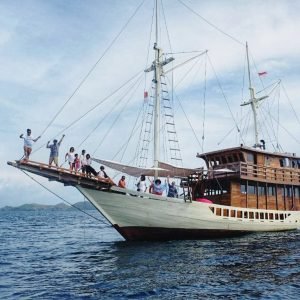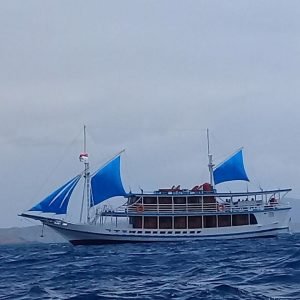
Geographical of Flores Island–Flores Island is part of Indonesia, located in the eastern part of the archipelago. It is situated to the east of Sumbawa and west of Timor, and it is one of the Lesser Sunda Islands. The island is approximately 1,200 kilometers (about 750 miles) east of Bali and is part of the East Nusa Tenggara province. Flores is bordered by the Flores Sea to the north and the Indian Ocean to the south.
The island is characterized by its mountainous terrain, with several active volcanoes, including Mount Kelimutu, which is famous for its tri-colored crater lakes. The island’s geography features a mix of rugged hills, lush valleys, and beautiful coastlines, making it a stunning destination for nature lovers and adventure seekers.
Climate of Flores Island
Flores Island experiences a tropical climate, which is typical for many regions in Indonesia. The climate can be categorized into two main seasons:
1. Wet Season (November to March)
– During the wet season, Flores experiences heavy rainfall, particularly from December to February. The humidity levels are high, and the temperatures generally range from 25°C to 30°C (77°F to 86°F). The rain can lead to lush green landscapes, especially in the mountainous areas, but it can also cause occasional flooding and landslides in some regions.
2. Dry Season (April to October):
– The dry season is characterized by lower humidity and less rainfall, making it the ideal time for outdoor activities and exploration. Temperatures during this season typically range from 24°C to 32°C (75°F to 90°F). The dry season is also when many tourists visit Flores, as the weather is more favorable for hiking, beach activities, and sightseeing.
Overall Climate Characteristics
Temperature: Flores generally has warm temperatures year-round, with minimal variation between seasons. The coastal areas tend to be warmer, while the mountainous regions can be cooler, especially at higher elevations.
– Humidity: The island experiences high humidity levels, particularly during the wet season, which can make the heat feel more intense.
– Microclimates: Due to its diverse topography, Flores Island has various microclimates. The coastal areas are typically hotter and drier, while the interior mountainous regions can be cooler and wetter.
In summary, Geographical of Flores Island and tropical climate contribute to its rich biodiversity and stunning landscapes, making it a unique destination within Indonesia. The island’s combination of mountains, beaches, and cultural heritage offers visitors a wide range of experiences throughout the year.


